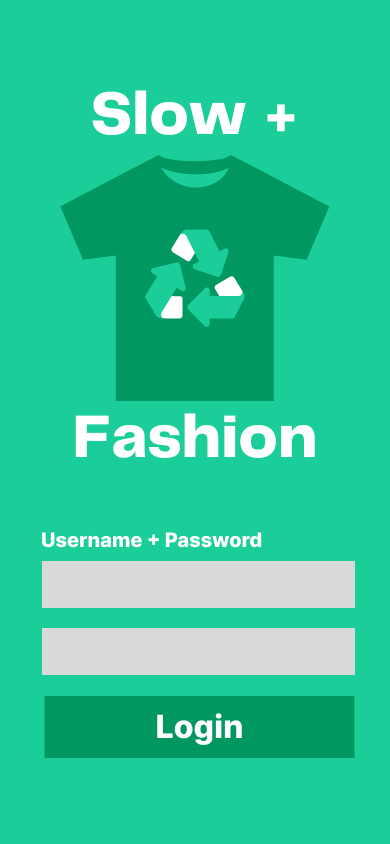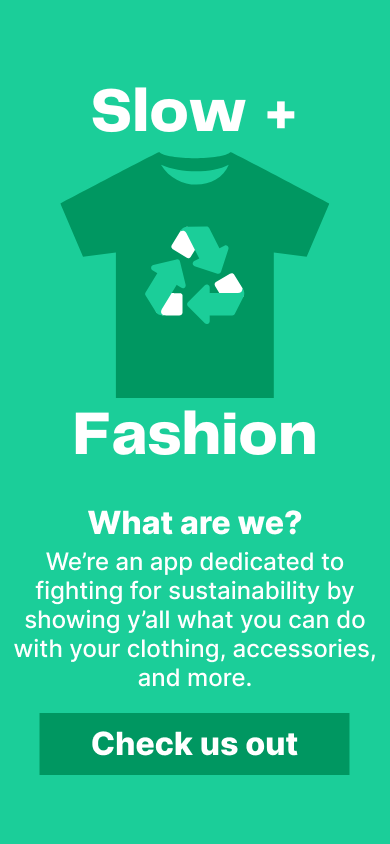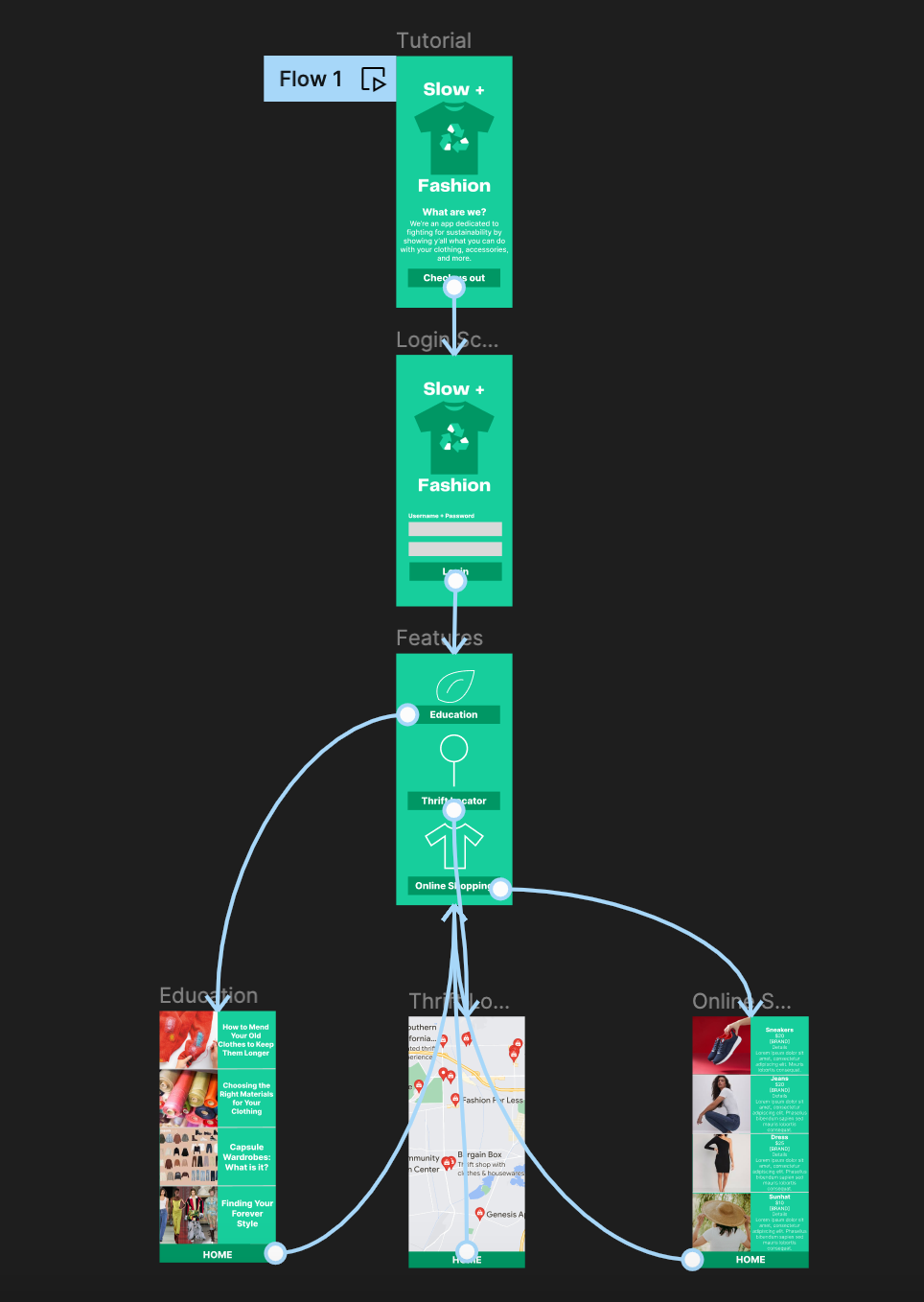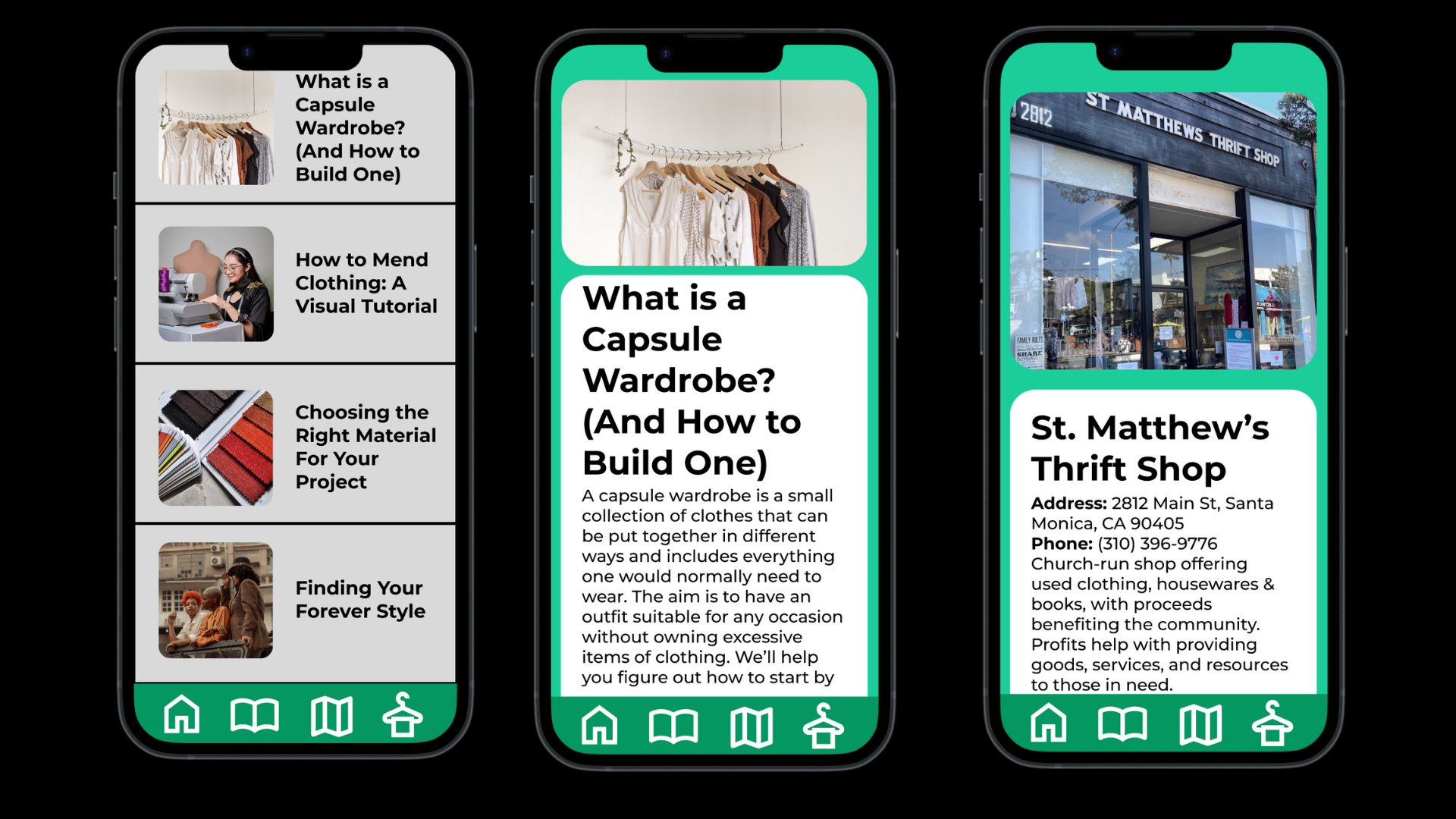Slow Fashion: Clothing a Better World
An app designed to minimize users’ climate footprint in regards to their clothing choices.

Brief
For DESIGN 21: Design Methods at SMC, we explored different methodologies to understand as designers. The semester was spent utilizing these techniques for one out of five topics out of each student’s choosing. I chose sustainability.Time Frame: Spring Semester 2023 (16 weeks)
Skills:
- User Research
- UI/UX Design
- Graphic Design
- Design Critique
Tools: Figma, Mural, Slack, & Canva
Skills:
- User Research
- UI/UX Design
- Graphic Design
- Design Critique
Tools: Figma, Mural, Slack, & Canva
Each week we were exposed to a new, common design method or process. As individuals we then applied these design methodologies to our chosen topic. Concepts covered include sketching, brainstorming, visual research, Interviewing, field research, moodboards, brand books, co-designing, mind mapping, and concept presentations. We would give and receive feedback with our classmates, a group of about a dozen students, and apply advice from our professor as well.
Problem Space
Dicsovery Research
The first step was to explore the chosen topic to find problems. Our first assignment was to find successes and failures within the topic.Successes
1. Sustainability takes a holistic approach to production and logistics to minimize environmental impact. x
2. Sustainability reduces pollution, causes fewer greenhouse gas emissions, conserves resources, wastes less, and preserves wildlife to have a positive societal impact. x
3. Governments across the world are enacting laws in order to stop the spread of climate change through sustainable actions. x
1. Sustainability takes a holistic approach to production and logistics to minimize environmental impact. x
2. Sustainability reduces pollution, causes fewer greenhouse gas emissions, conserves resources, wastes less, and preserves wildlife to have a positive societal impact. x
3. Governments across the world are enacting laws in order to stop the spread of climate change through sustainable actions. x
Failures
1. Companies actively participate in greenwashing: giving the false impression that they practice sustainably by using mislead or outright false information. x
2. Misinformation is stopping sustainability efforts such as renewable energy. x
3. Corporations and companies that profit off of poor sustainability efforts and loose regulations actively lobby against sustainability efforts and win. x
1. Companies actively participate in greenwashing: giving the false impression that they practice sustainably by using mislead or outright false information. x
2. Misinformation is stopping sustainability efforts such as renewable energy. x
3. Corporations and companies that profit off of poor sustainability efforts and loose regulations actively lobby against sustainability efforts and win. x
User Interviews
Three people were chosen forinterviews that included questions such as context-setting, backgrounds, and high-level thoughts.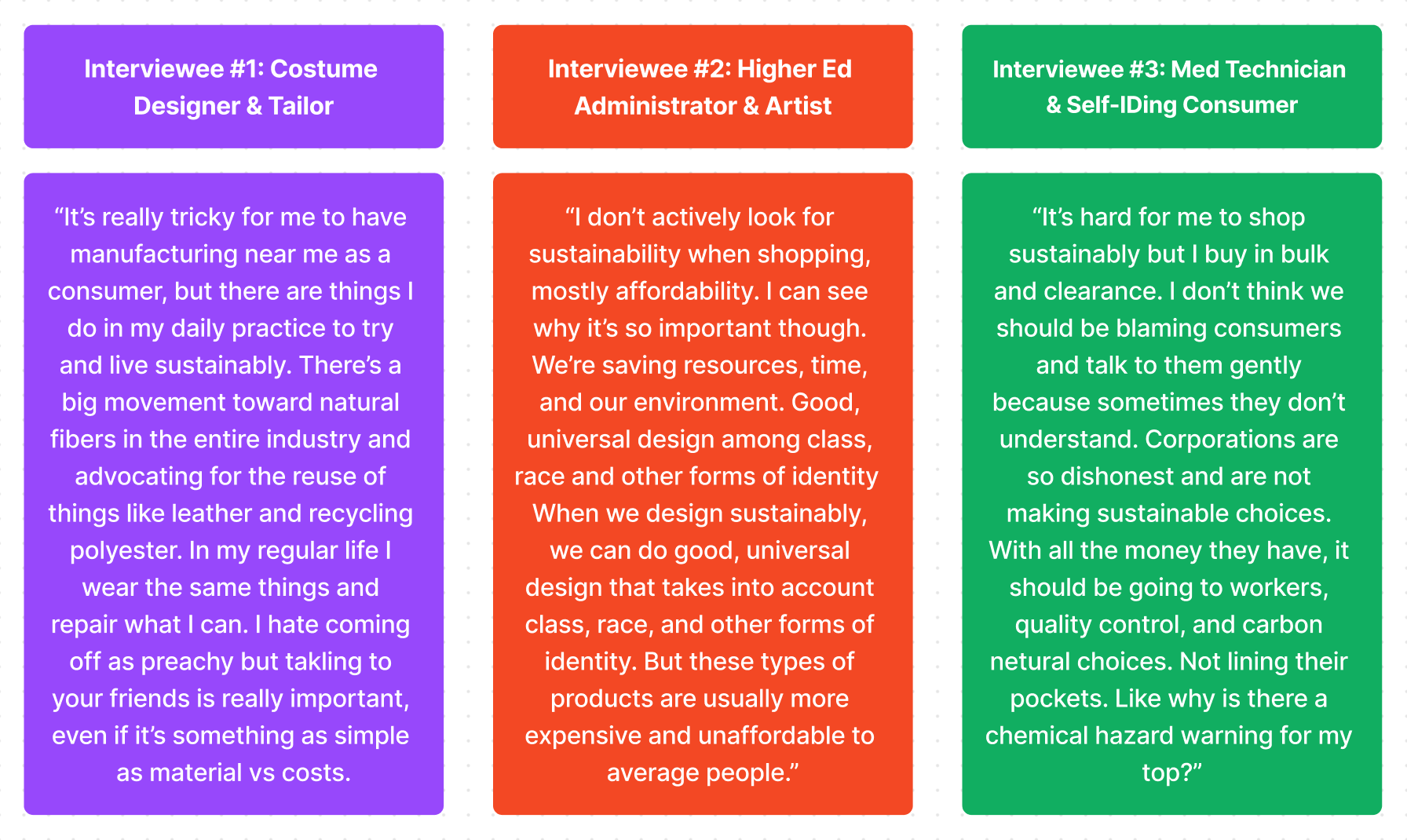
- 2/3 of interviewees focused their sustainability practices to clothing and fashion.
- Interviewees felt like they have a role to take in sustainability, but felt disempowered by the current state of the movement.
- Sustainability has issues with affordability.
Problem Statement
The 4W’s method was made to formalize a statement.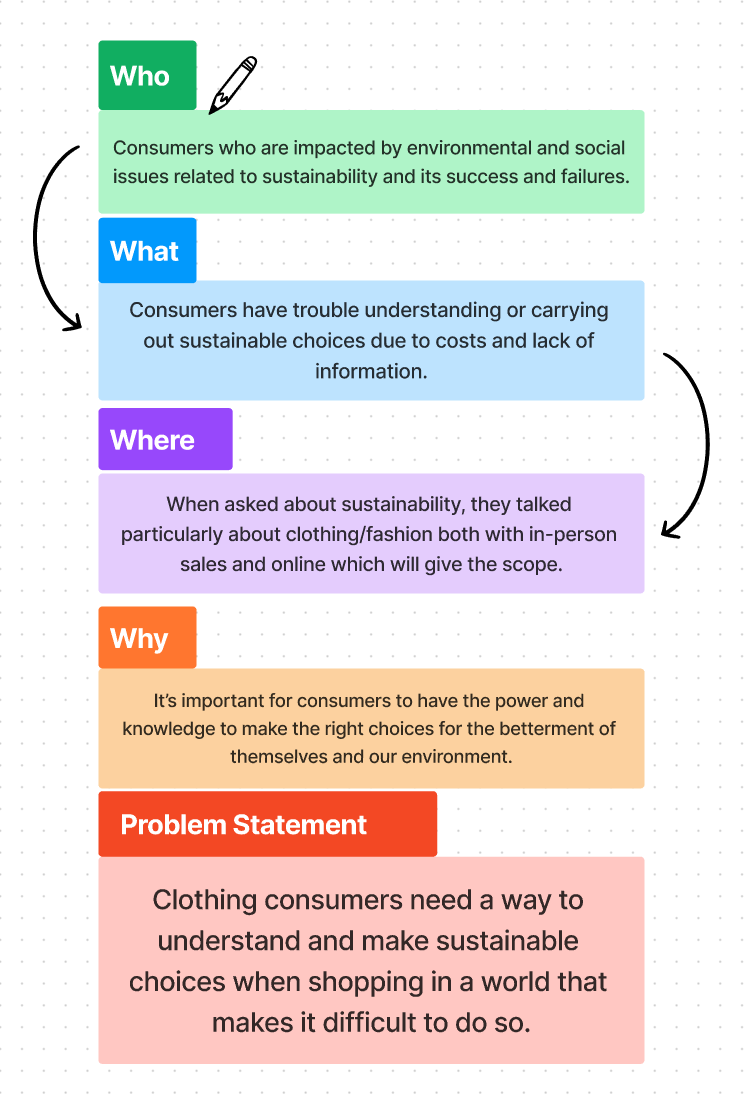
Creative Briefs
Client and campaign templates were given to me to fill out as roadmaps from ideas to completion. My idea was to create an application that can be used to buy and re-sell clothing, find thrift stores, and learn more about sustainability.

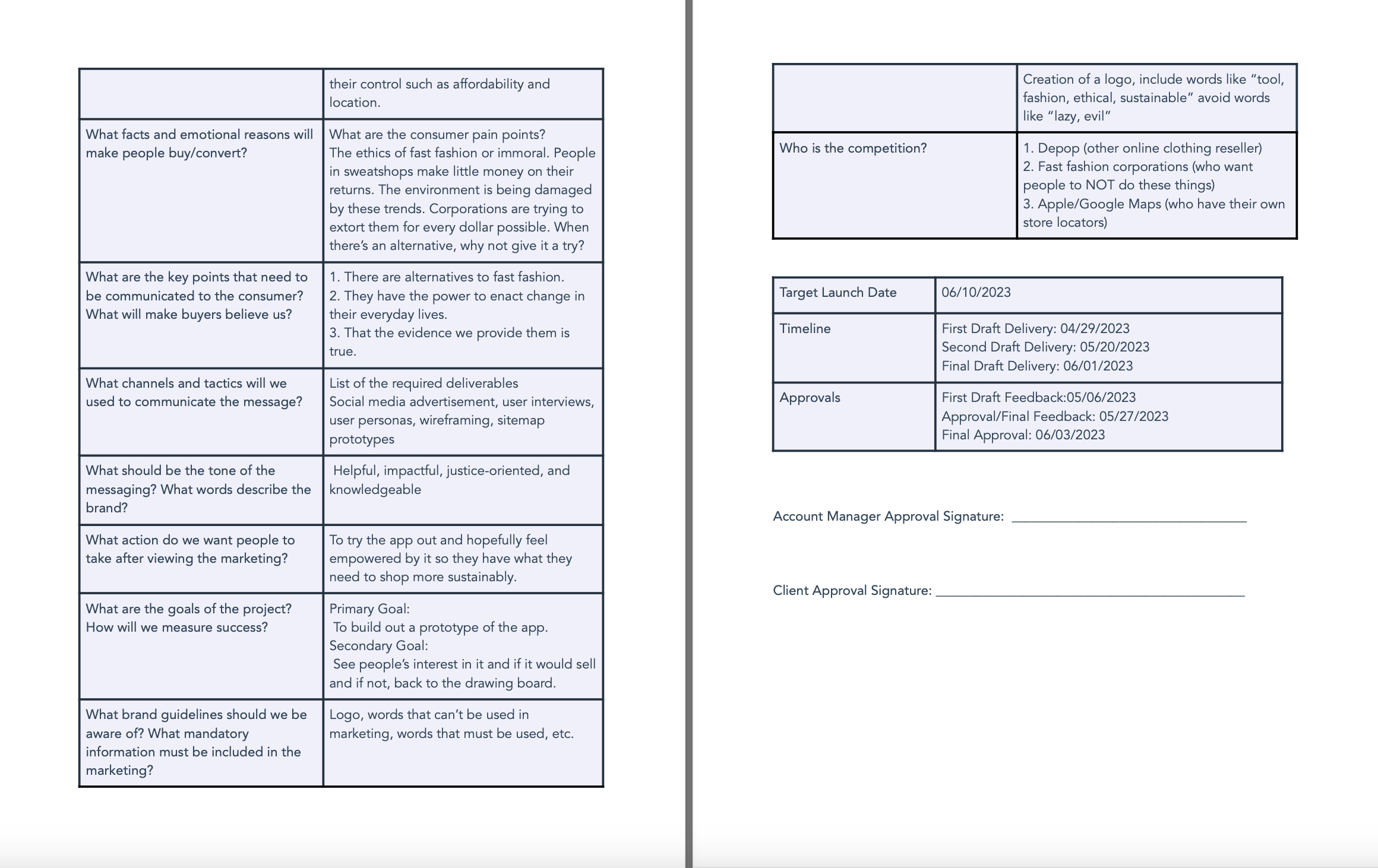
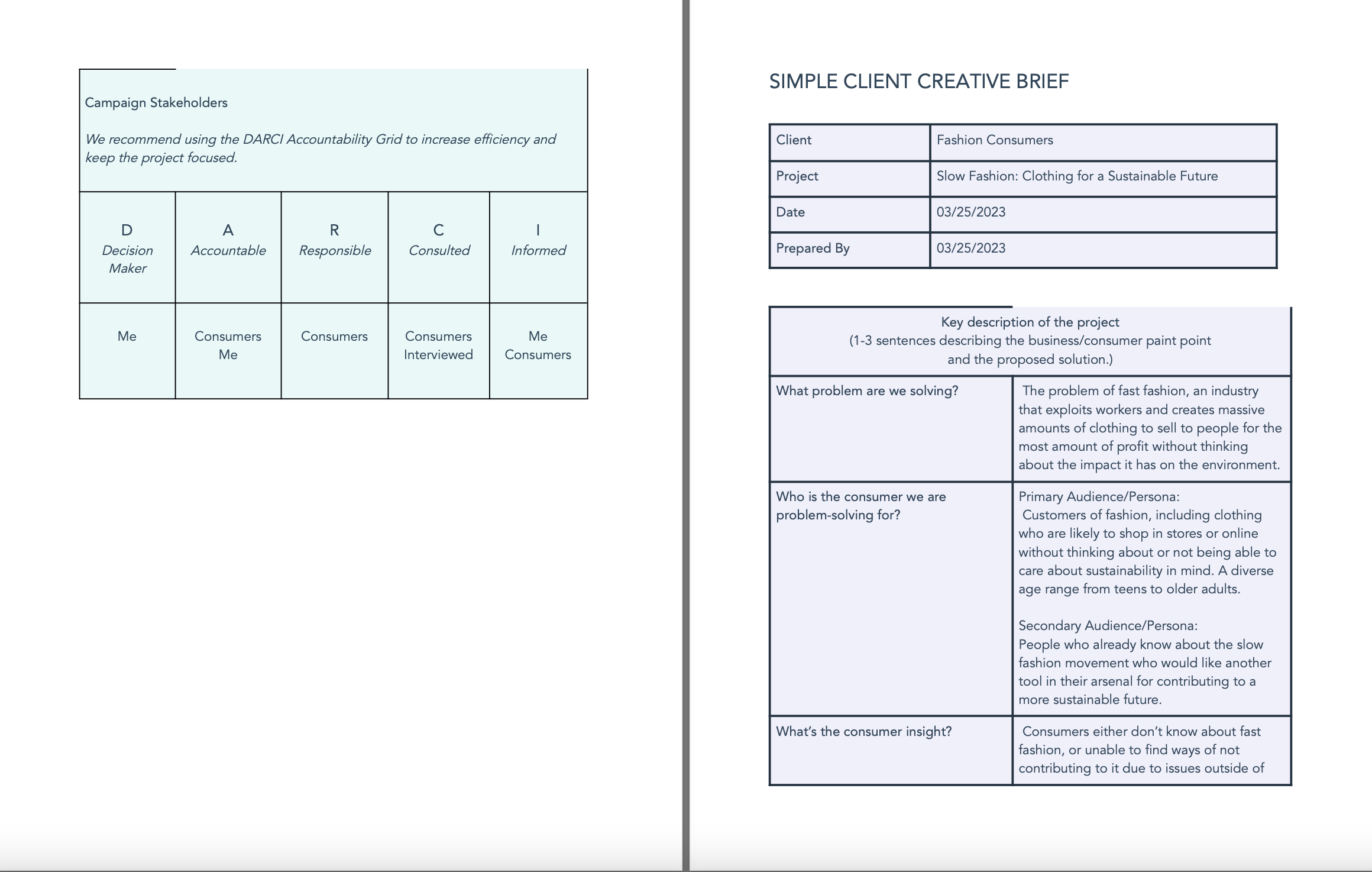
Design Tools Utilized
Mindmapping
![]()
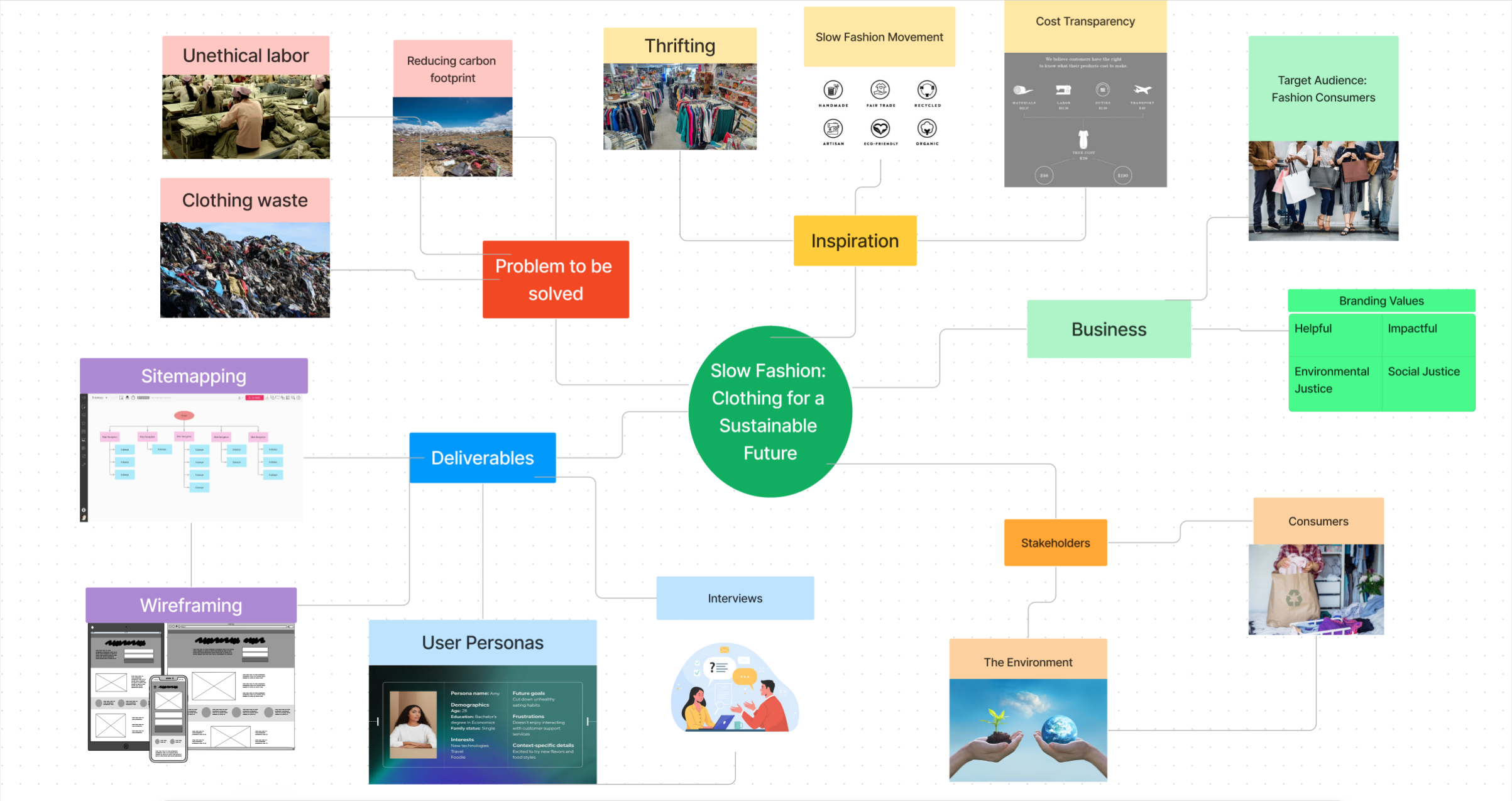
Collaborative Storyboarding
![]()
![]()
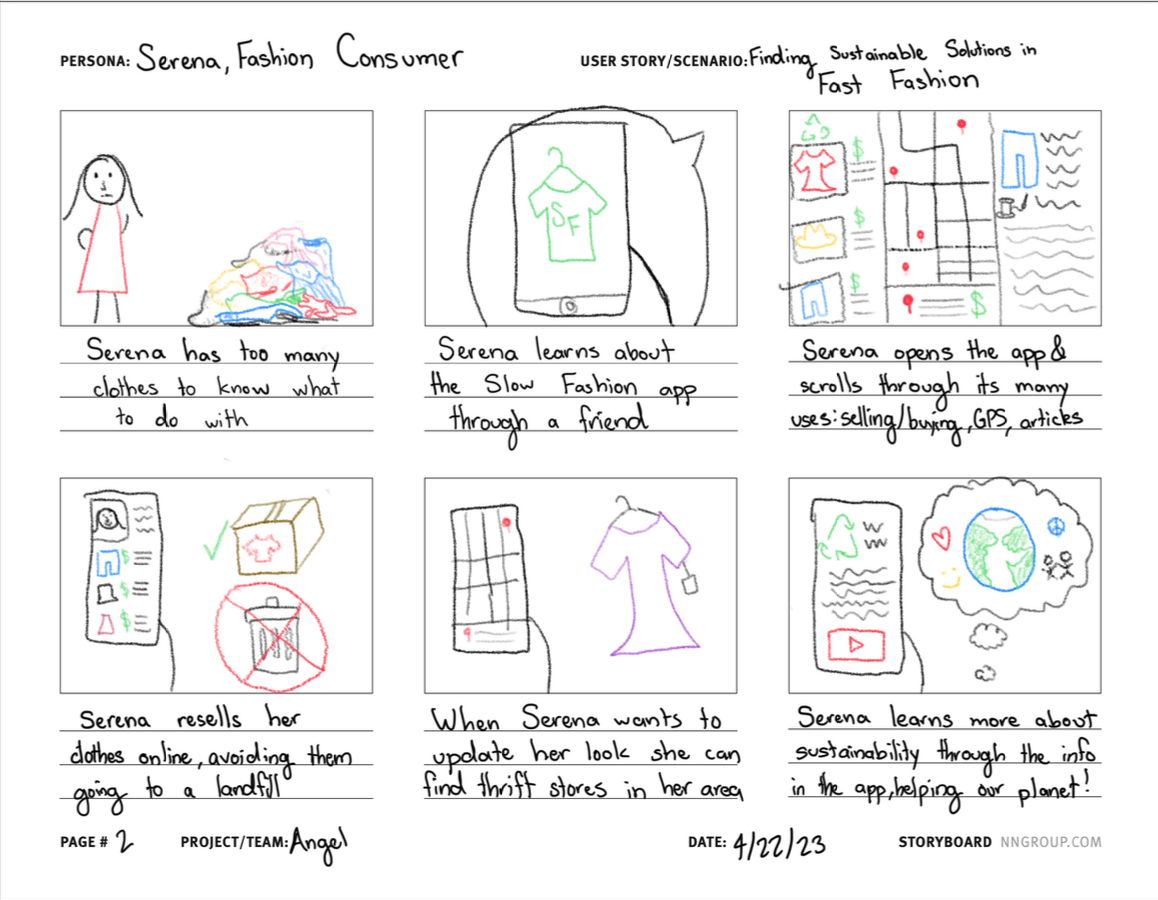

Wireframing
![]()
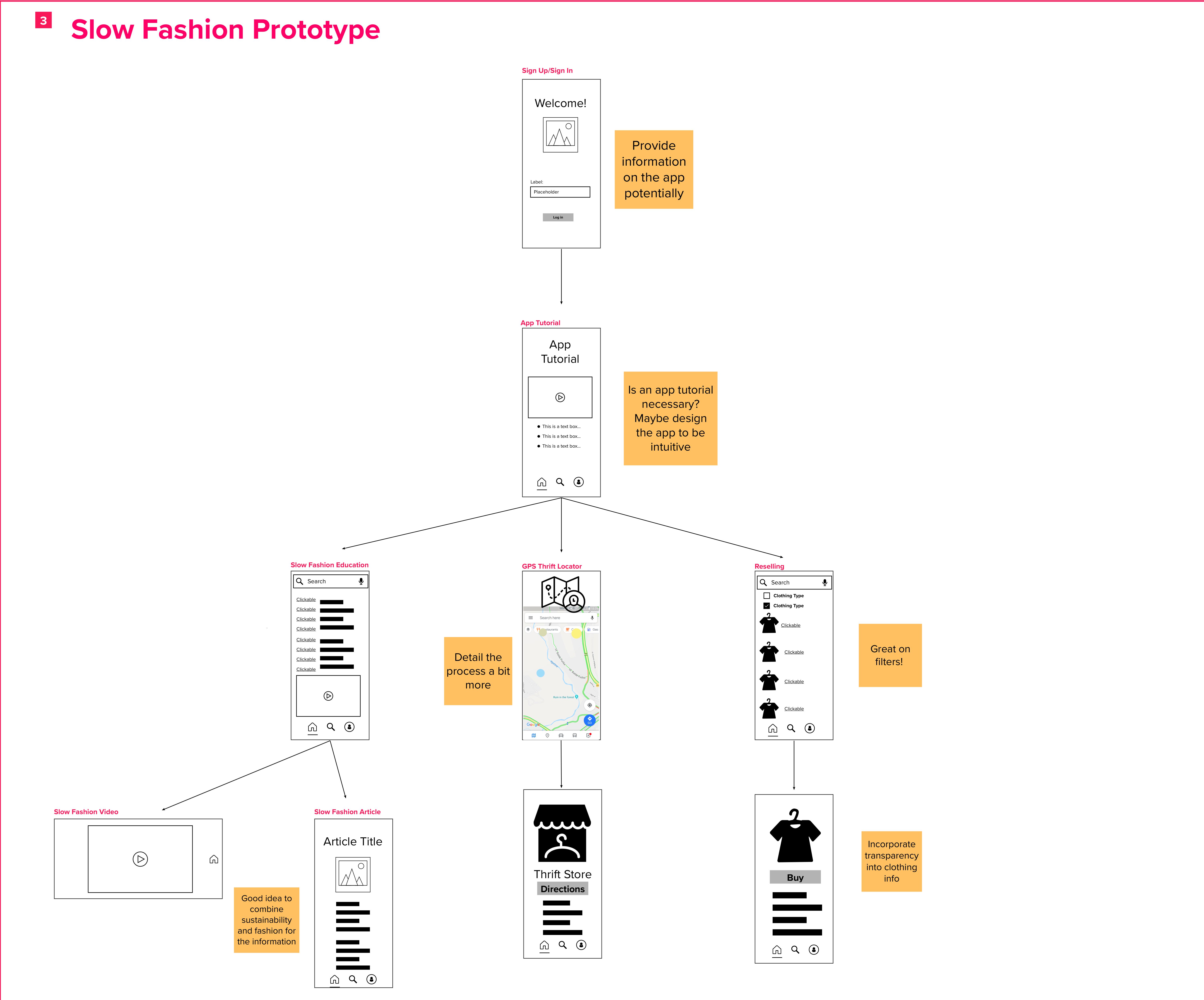
Style Guide
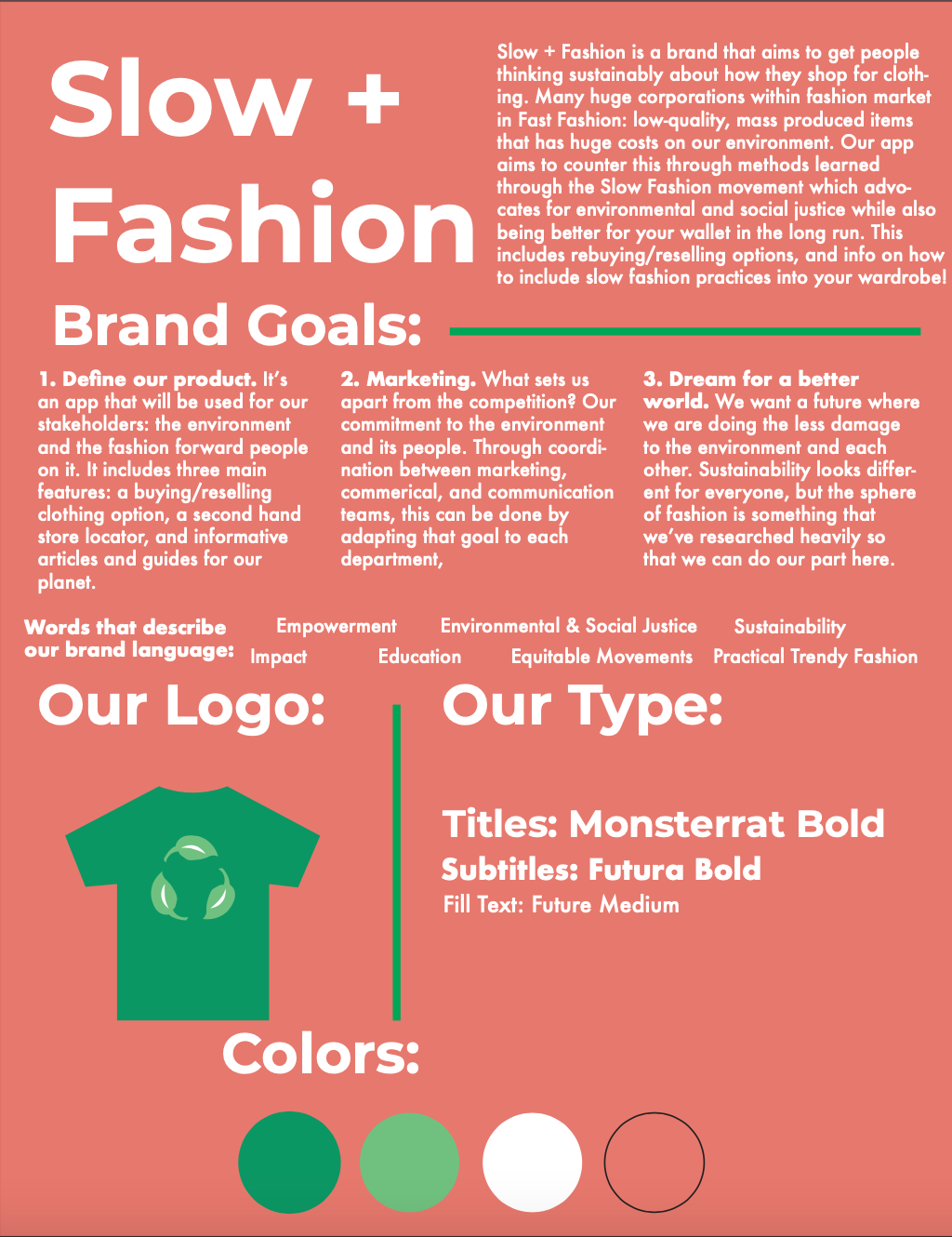
Crude Prototype & User Testing
This was my first time creating a Figma prototype, so my time was spent understanding designing and functionality. Pressed for time, my goal was for users to be able to see what the content of the app will be and how it will be organized.Insights:
- Users were able to understand what the content of the app would look like and felt it important and useful in our current climate.
- Design for better directional navigation especially with the bottom app bar.
- Incorporate and fine-tune details so that the brand goals stand out much more by going more in depth on each of the brand’s features.
